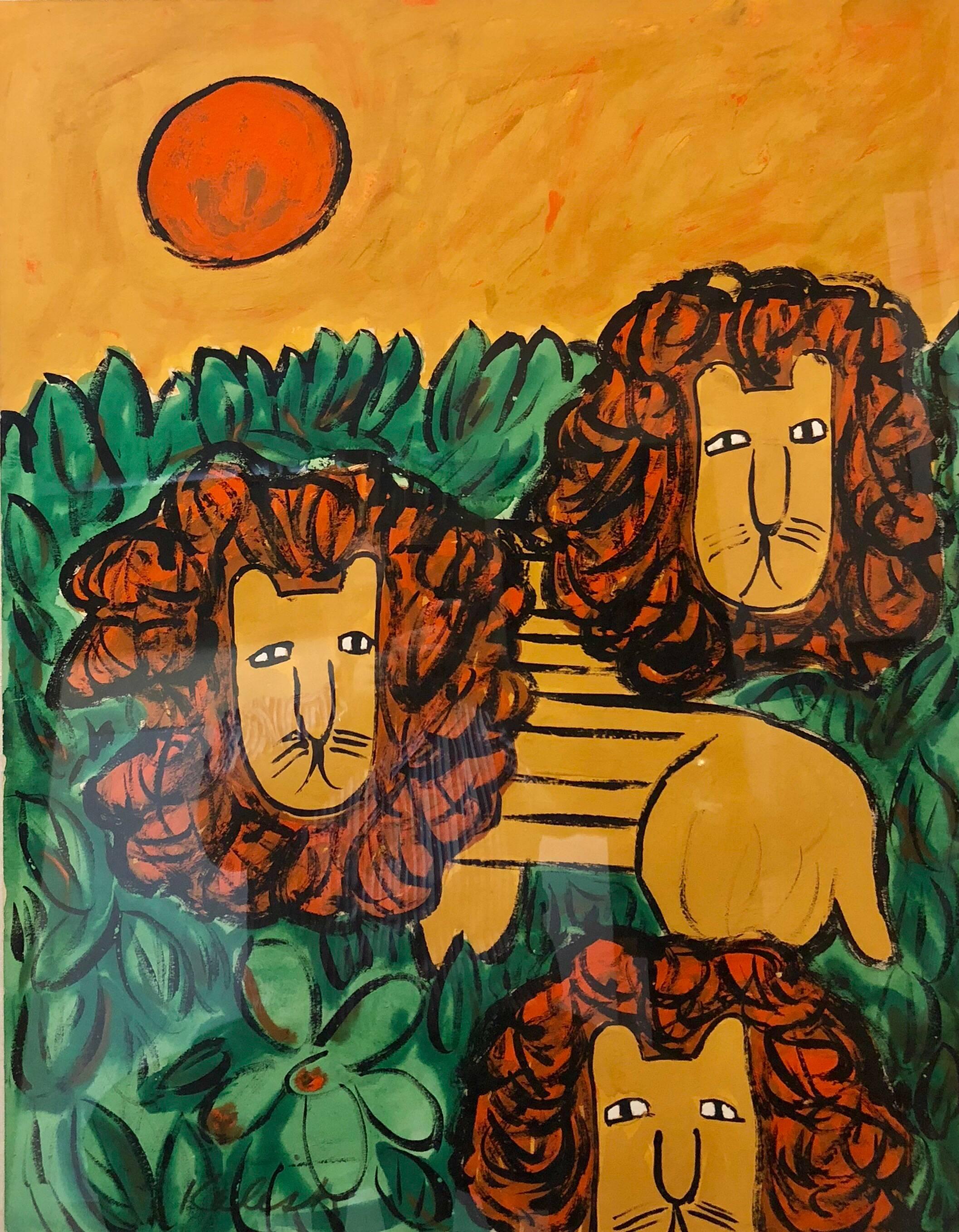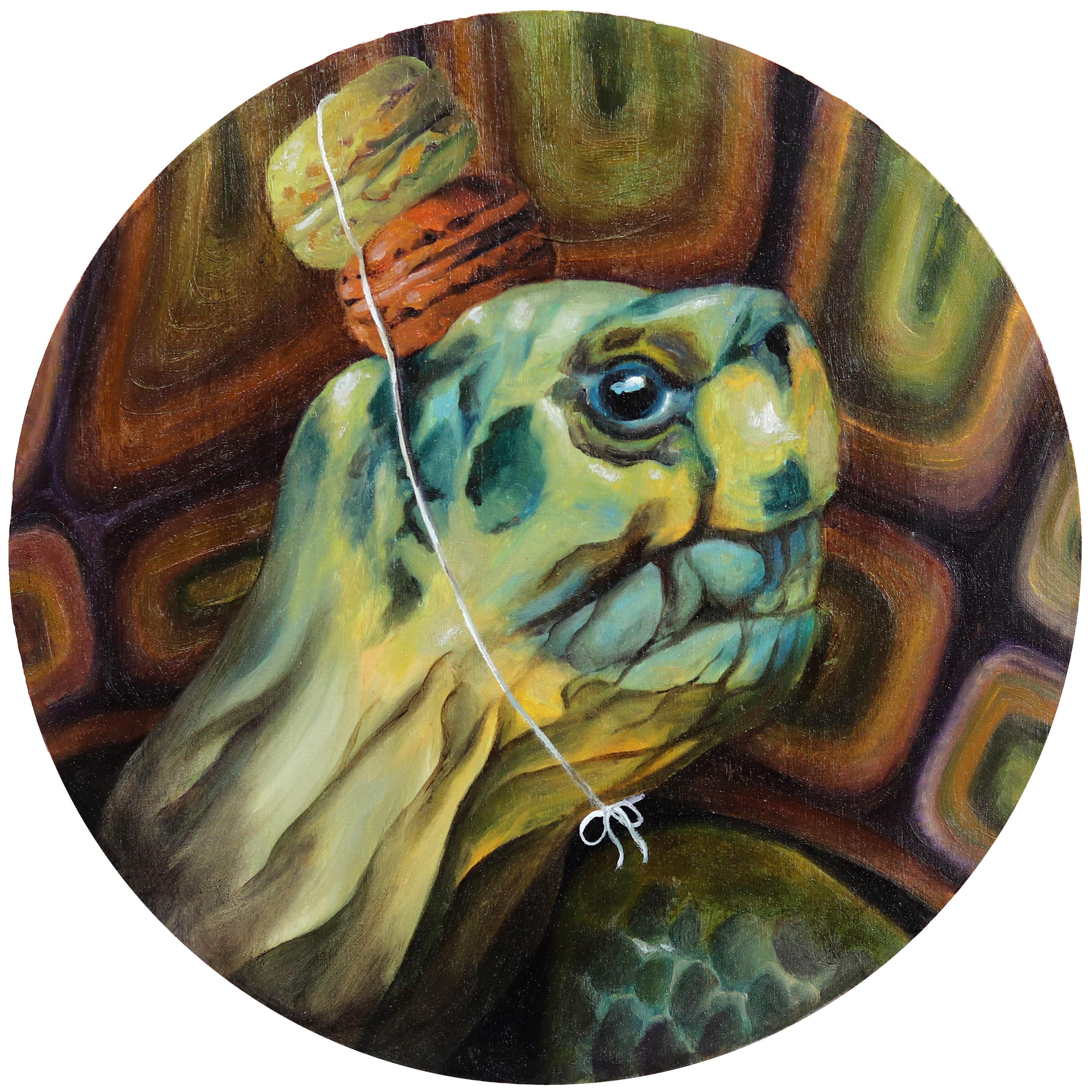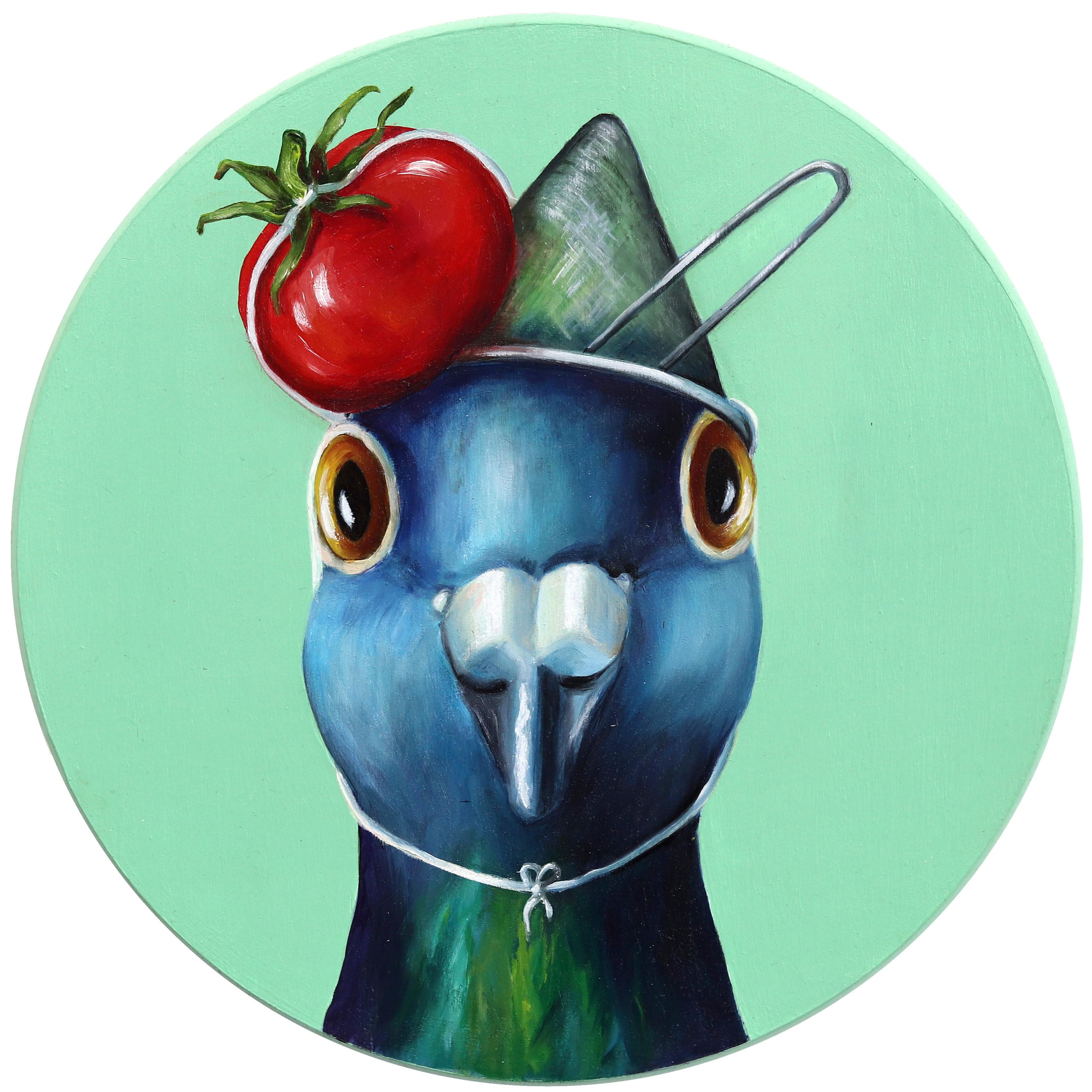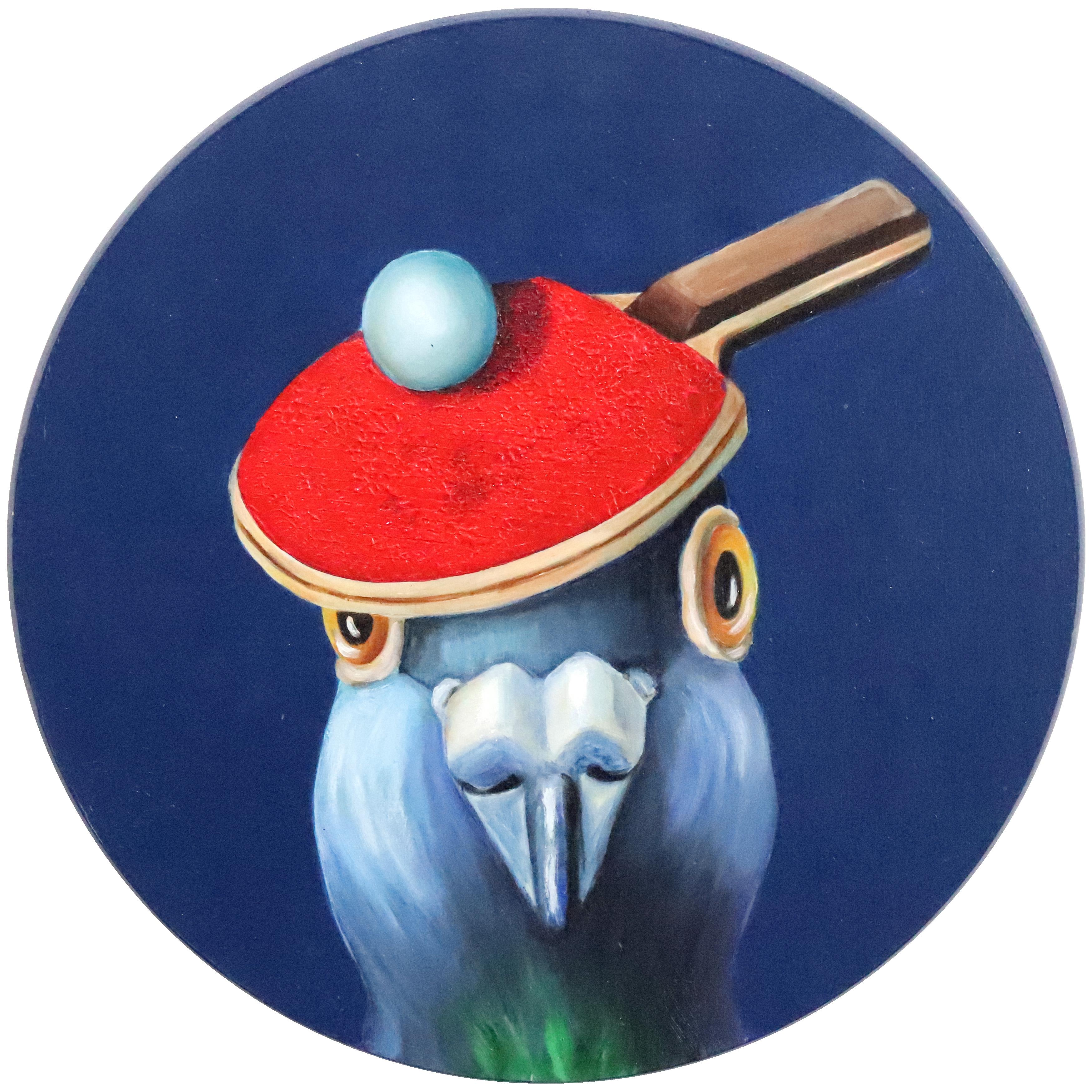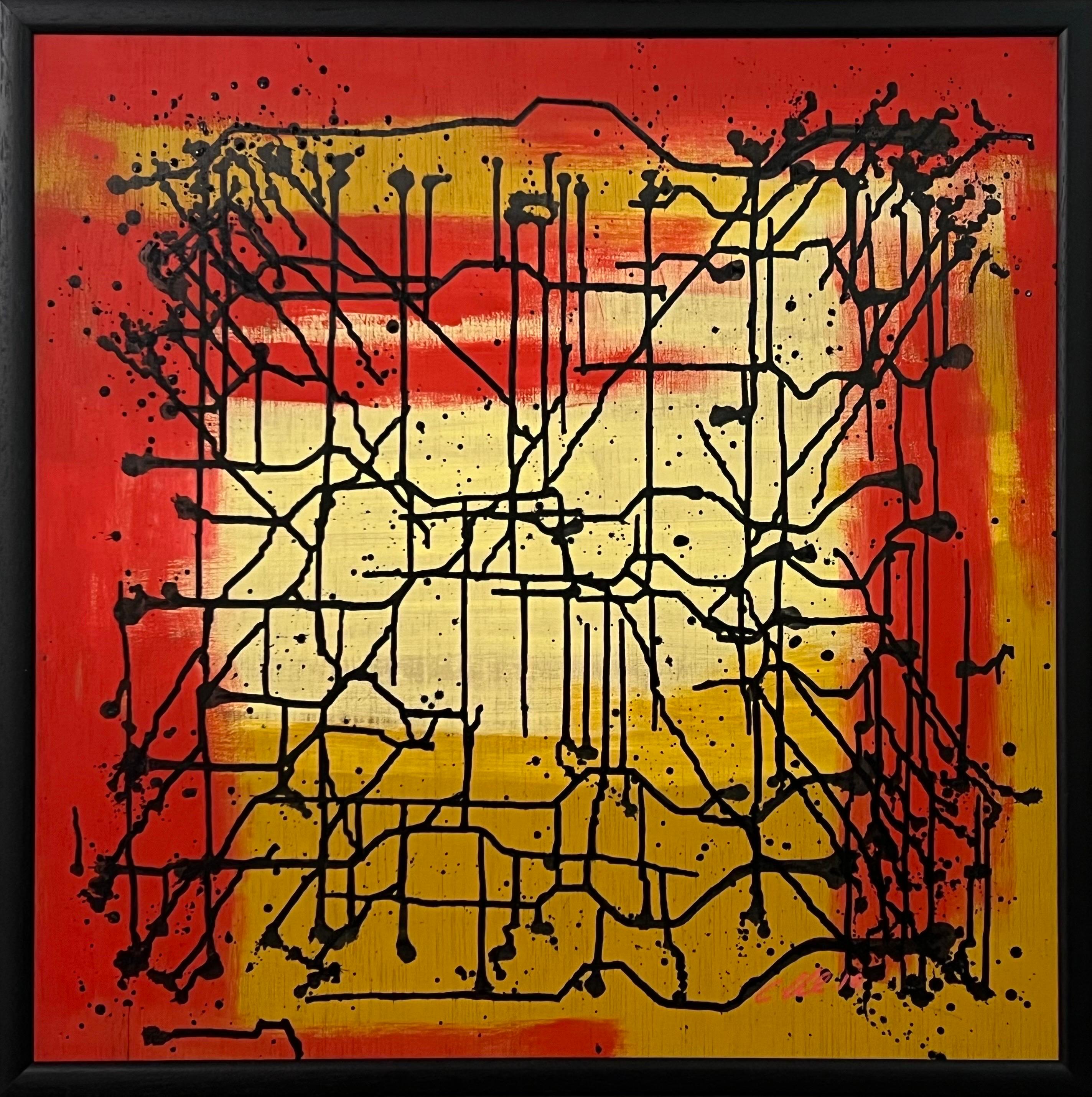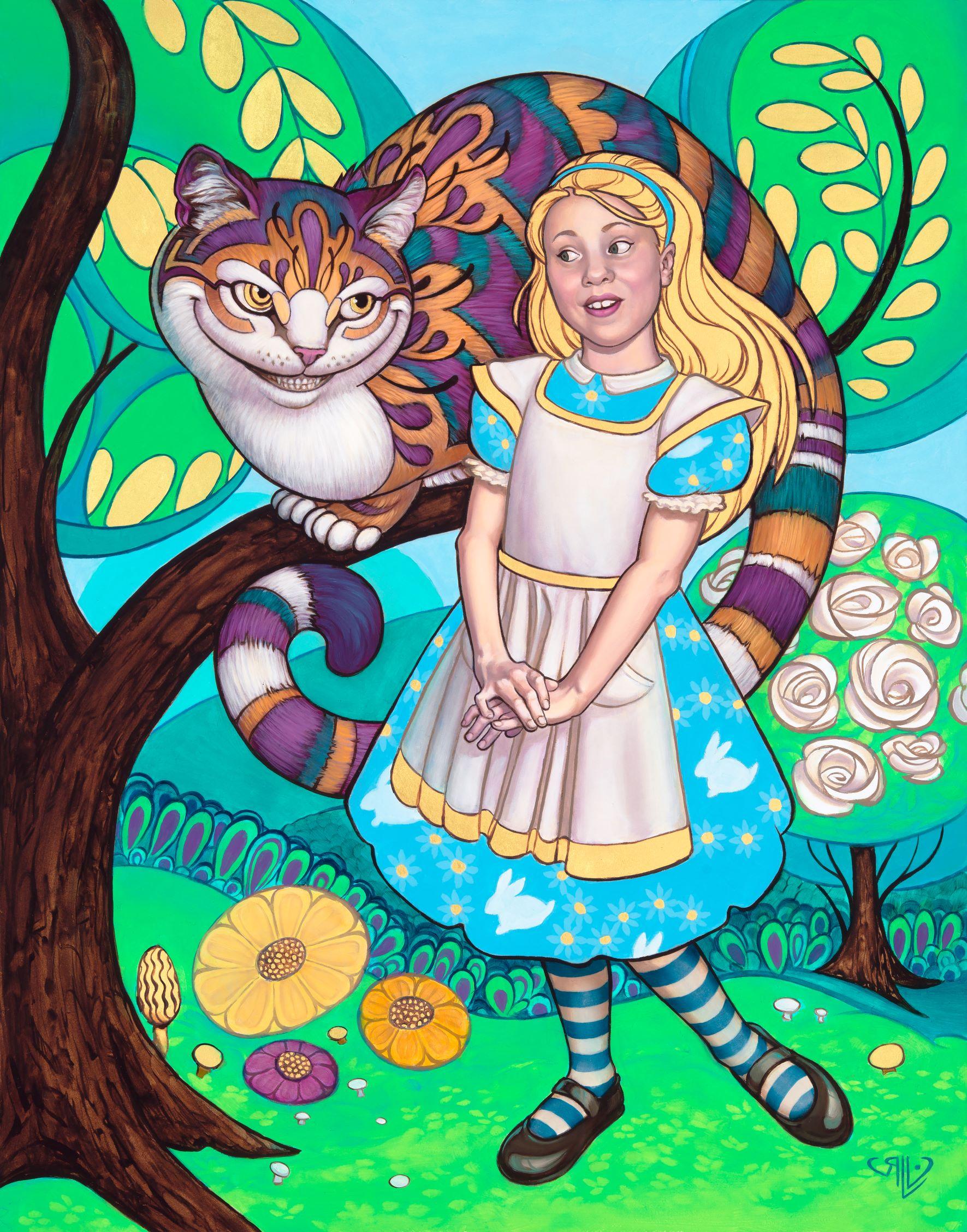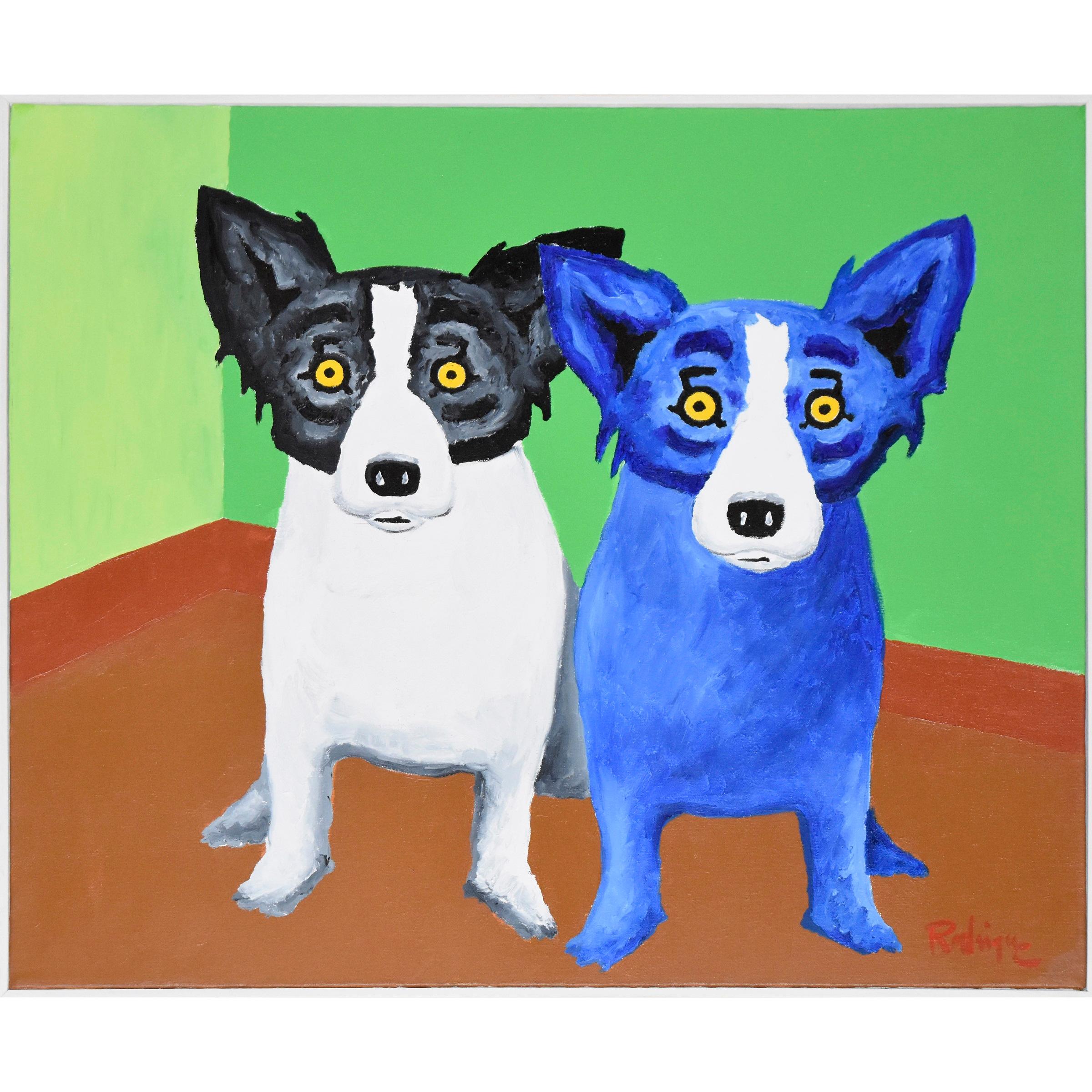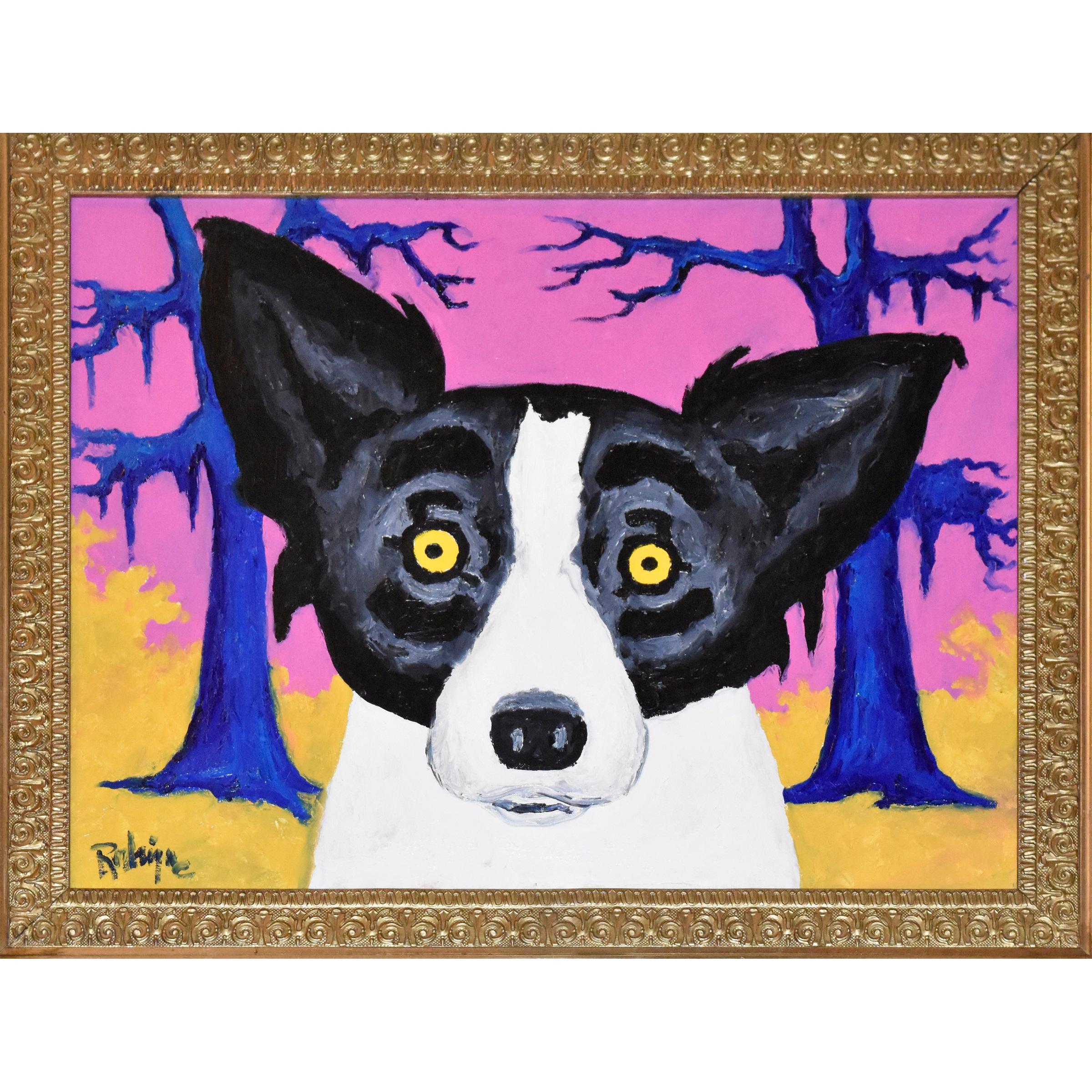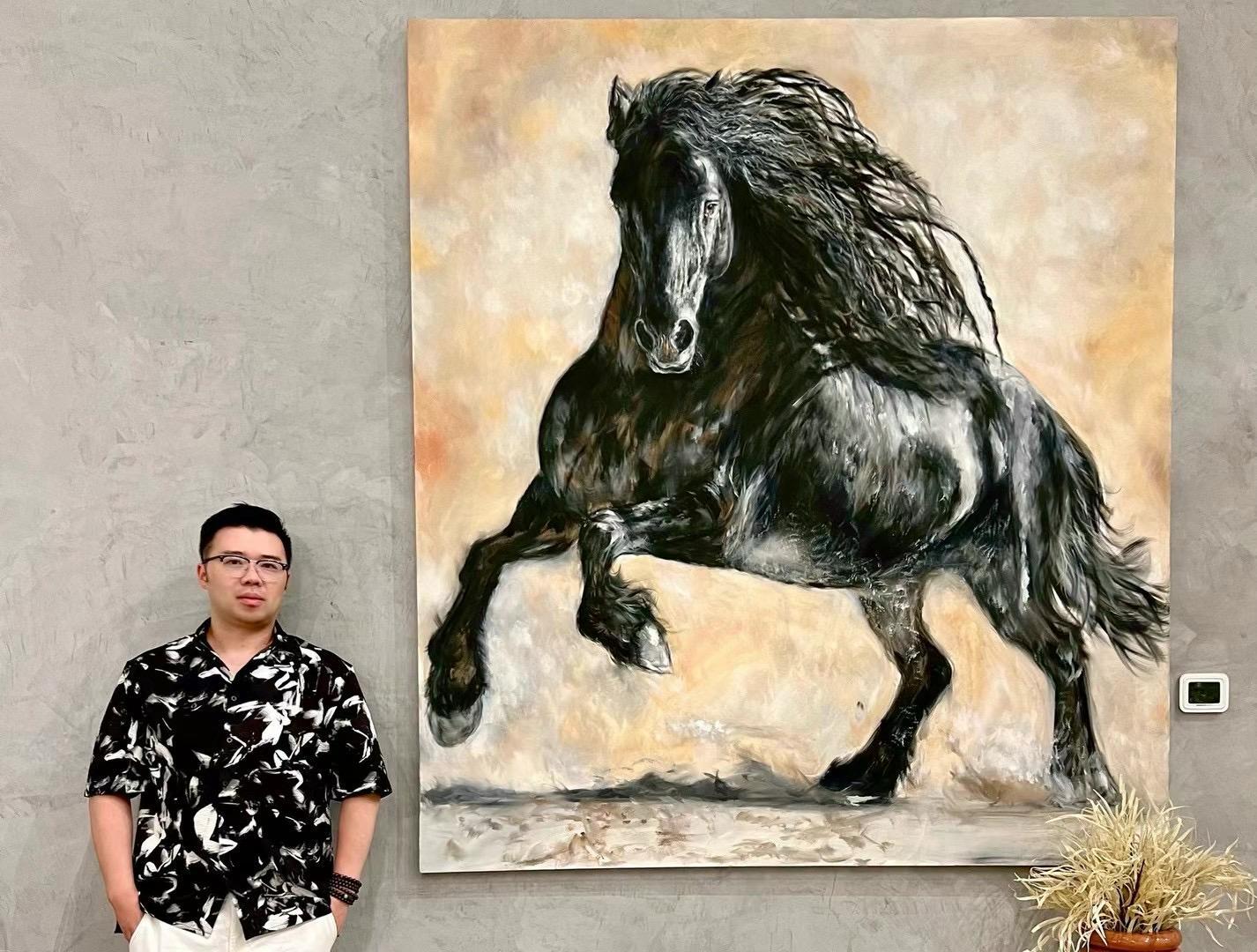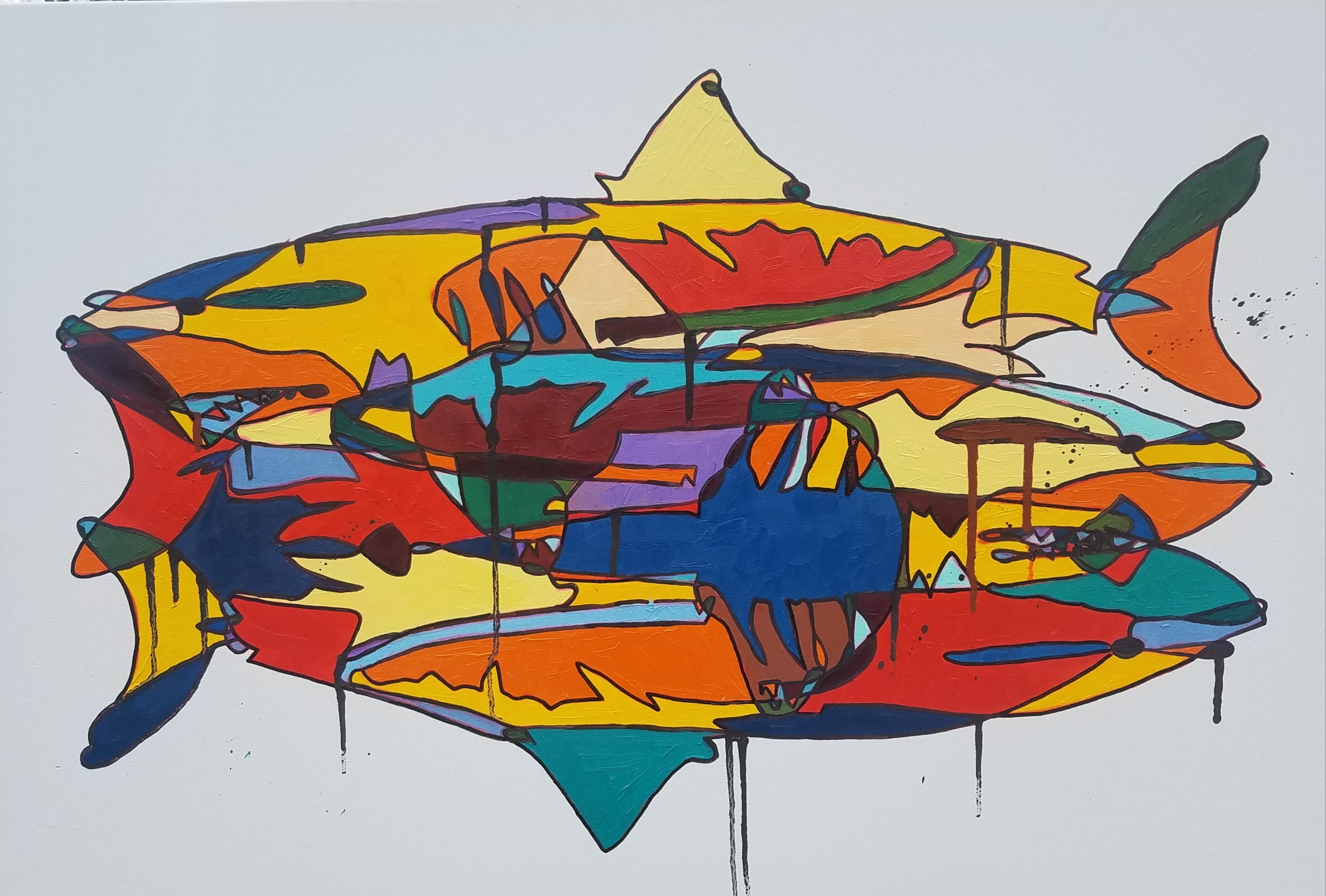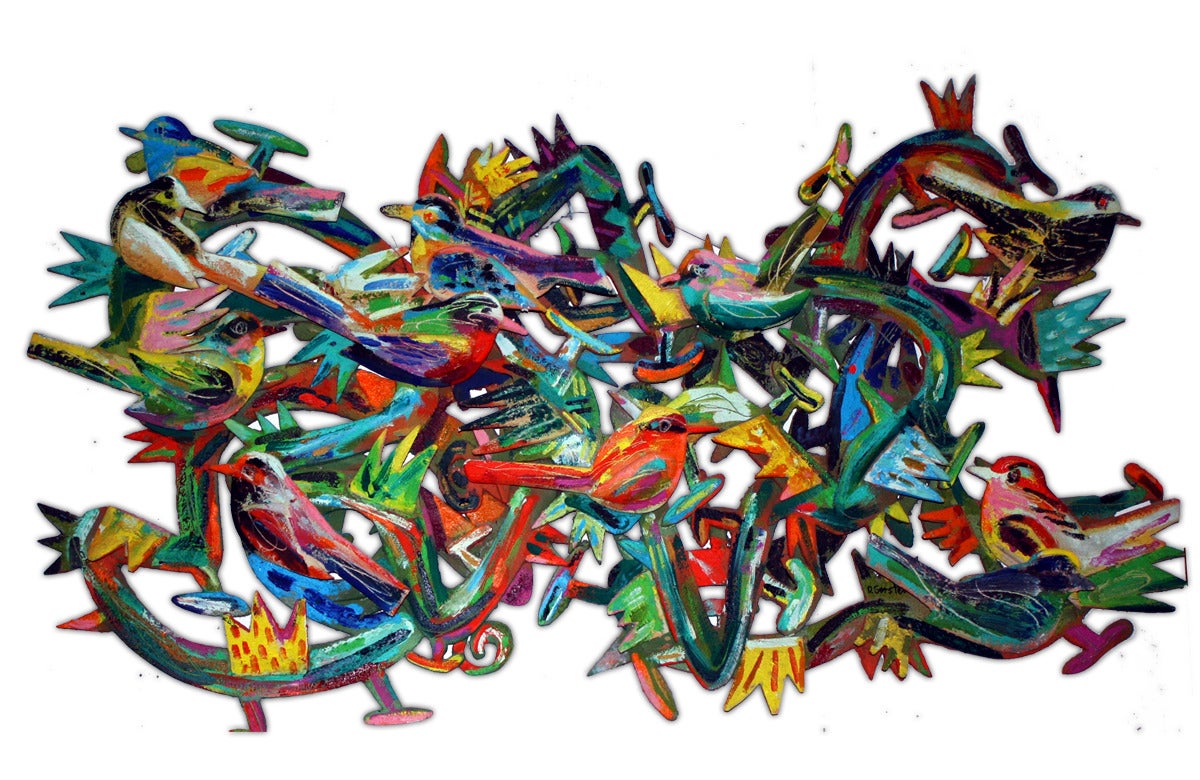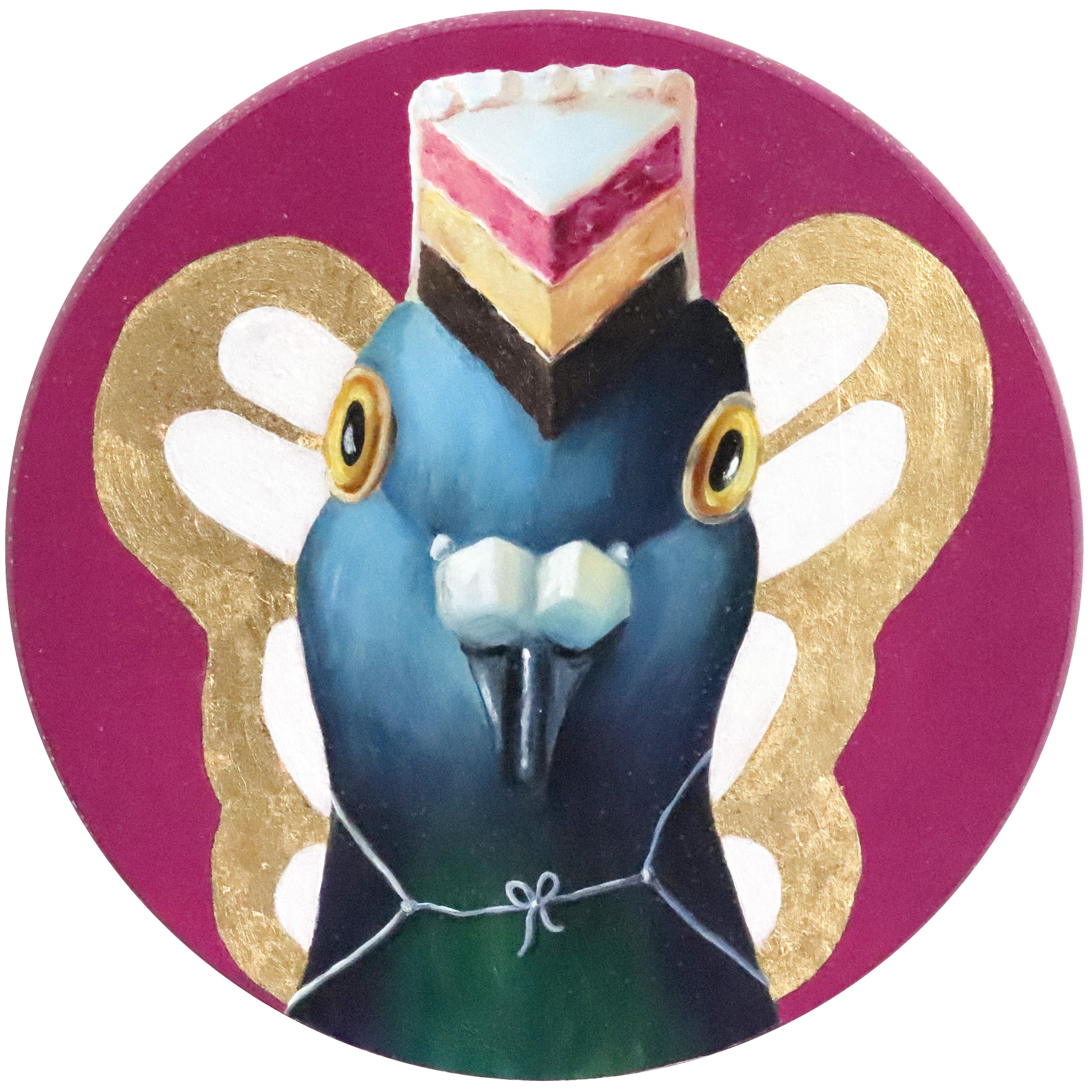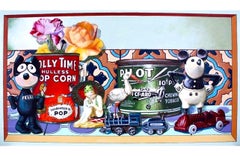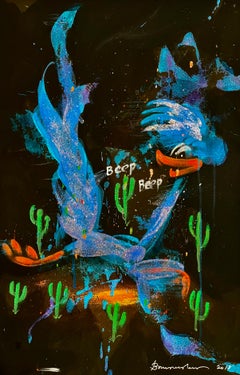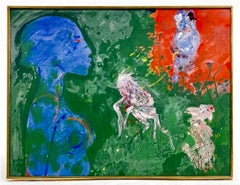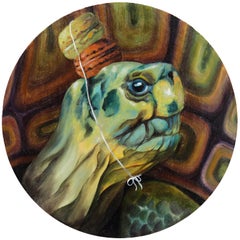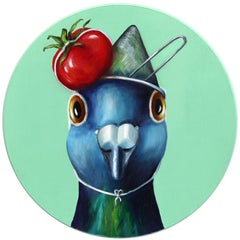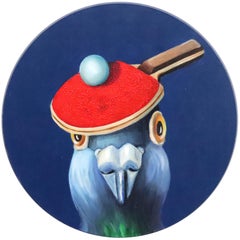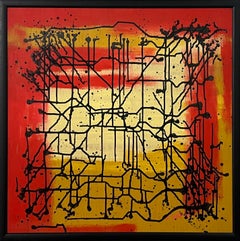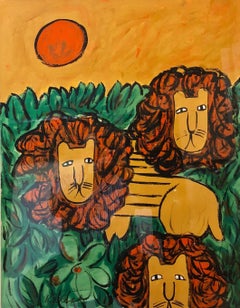
Original Oil Painting LIONS in a Modernist Illustration Mod Naive Graphic Style
View Similar Items
Want more images or videos?
Request additional images or videos from the seller
1 of 9
Lionel KalishOriginal Oil Painting LIONS in a Modernist Illustration Mod Naive Graphic Stylec.1960s
c.1960s
$3,200List Price
About the Item
- Creator:Lionel Kalish (1931, American)
- Creation Year:c.1960s
- Dimensions:Height: 33.5 in (85.09 cm)Width: 27 in (68.58 cm)
- Medium:
- Movement & Style:
- Period:
- Condition:needs new mat and frame. staining to mat lower right does not affect image.
- Gallery Location:Surfside, FL
- Reference Number:1stDibs: LU3822616223
About the Seller
4.9
Platinum Seller
Premium sellers with a 4.7+ rating and 24-hour response times
Established in 1995
1stDibs seller since 2014
1,782 sales on 1stDibs
Authenticity Guarantee
In the unlikely event there’s an issue with an item’s authenticity, contact us within 1 year for a full refund. DetailsMoney-Back Guarantee
If your item is not as described, is damaged in transit, or does not arrive, contact us within 7 days for a full refund. Details24-Hour Cancellation
You have a 24-hour grace period in which to reconsider your purchase, with no questions asked.Vetted Professional Sellers
Our world-class sellers must adhere to strict standards for service and quality, maintaining the integrity of our listings.Price-Match Guarantee
If you find that a seller listed the same item for a lower price elsewhere, we’ll match it.Trusted Global Delivery
Our best-in-class carrier network provides specialized shipping options worldwide, including custom delivery.More From This Seller
View AllOriginal Oil Painting LIONS in a Modernist Illustration Mod Naive Graphic Style
Located in Surfside, FL
33.5x27, sight size 28x22
Lionel Kalish born 1931 New York, NY A painter and childrens book illustrator.
Education: 1951 Cooper Union of the Advancement of Science and Art, New York, NY
Selected Solo Exhibitions:
1978 Forum Gallery, New York, NY
1980 Galerie Brusberg, Hannover, Germany
1981 ACA Galleries, New York, NY
1982 Galerie Stubler, Frankfurt Germany
1984 Galerie Brusberg, Berlin, Germany
1990 Sid Detuch Gallery, New York, NY
1994 Lewis Newman Galleries, Beverly Hills, CA
Galerie Brusberg, Berlin, Germany
1996 The Horwitch Newman Gallery, “Italy: The Poetry of Landscape,” Scottsdale, AZ
Gremillion & Co. Fine Arts, “Italy: The Timeless Landscape,” Houston, TX
1997 Hoorn-Hashby Gallery, “Color and Light: The Italian Façade...
Category
1960s Pop Art Animal Paintings
Materials
Paper, Oil
Large Ralph Massey California Pop Art Painting Vintage Americana, Toys Old Cars
Located in Surfside, FL
ARTIFACTS, 2015,
Acrylic painting on paper artist mounted to panel,
Hand signed and dated right side
Dimensions: 24 x 43 x 1 ¾”
This depicts an old cast iron Mickey Mouse, Felix the Cat, an old tin can of pop corn and other vintage, nostalgic, Americana.
Born in 1938, Ralph Allen Massey is a talented American artist, sculptor and jewelry designer. Prior to the 1980s, in his work he preferred sculpture. However, in the early 1980s, together with the artist Sylvia Bennett, he opened the art studio “Raven”. using his creativity, has become the creation of jewelry decorations and jewelry boxes.
An interesting collection was “Wildlife”, brooches, earrings and rings in the form of animals and birds. Also, no less interesting was the line of jewellery inspired by the characters of the books “Alice in Wonderland...
Category
21st Century and Contemporary Pop Art Figurative Paintings
Materials
Acrylic, Wood Panel, Laid Paper
Bruce Helander Road Runner Mixed Media Painting with Glitter Florida Pop Art
By Bruce Helander
Located in Surfside, FL
Bruce Helander
Road Runner (Beep, Beep)
Mixed Media Artwork Hand signed and dated
This is a unique work and is not numbered.
Frame: 31" X 21.25"
Image: 29.5" X 19.5"
This appears to be glitter and paint over a printed background on canvas.
Wile E. Coyote and the Road Runner are a duo of cartoon characters from the Looney Tunes and Merrie Melodies series of animated cartoons, first appearing in 1949. The characters were created for Warner Bros in 1948 by animation director Chuck Jones and writer Michael Maltese
Bruce Helander (1947 -) is an art critic, arts writer, curator and artist whose specialty is collage and assemblage. He has a master’s degree in painting from the prestigious Rhode Island School of Design, where he later became the Provost and Vice President for Academic Affairs of the college. He is a former White House fellow of the National Endowment for the Arts and has won the South Florida Cultural Consortium fellowship for professional achievement in the visual arts. He is one of two 2014 inductees to the Florida Artists Hall of Fame, Florida’s most prestigious arts and culture honor (the other is musician Tom Petty).
Helander is the former Editor-in-Chief of The Art Economist magazine and recently exhibited his work at Georgia Scherman Projects (Toronto), Corzine Fine Art (Los Angeles), Peter Marcelle Gallery (Bridgehampton, New York), Cornell Museum of Art (Delray Beach), and ArtHouse 429 (West Palm Beach). Most currently, his work was shown by Arcature Fine Art at Art Miami and Art Miami New York/Pier 94 and by Tansey Contemporary at Art Wynwood. Helander had a retrospective of his collages and paintings for the Coral Springs Museum of Art, scheduled for 2017, and his collages are included in “Open This End,” a five-year traveling museum show of works from the celebrated Blake Byrne collection in Los Angeles, currently at the Nasher Museum of Art. It included Pop art and Conceptual Art, Minimalism, body-oriented performance art, the Pictures Generation, identity politics and psychologically-inflected figurative works. Andy Warhol, Ed Ruscha, John Baldessari, Cindy Sherman, Louise Lawler, Rita McBride, Bruce Helander, Marlene Dumas, Albert Oehlen, Glenn Ligon, Mark Bradford and more.
His work is in over fifty museum permanent collections, including the Metropolitan Museum of Art, the Solomon R. Guggenheim Museum of Art, the Smithsonian Institution, the Montreal Museum of Art, the Art Institute of Chicago, the Whitney Museum of American Art, the Los Angeles County Museum of Art, the San Francisco Museum of Modern Art, the White House and the Vatican in Rome. His collages have been the subjects of over one hundred exhibitions in North America and Europe, with reviews in leading magazines such as ARTnews and Art in America.
Helander's work is in numerous private collections, including actors Martin Mull and Dennis Hopper, musicians David Byrne and Jimmy Buffett and fashion designer Todd Oldham, as well as numerous corporate commissions.
Prominent artists who collect his work include Dale Chihuly, Robert Rauschenberg, James Rosenquist and Larry Rivers. Football great Dan Marino, Senator Howard Metzenbaum and author Tom Wolfe own Helander work.
City Link magazine called Bruce Helander "arguably the most recognized and successful collage artist in the country.". "If there was a Pulitzer Prize for collage, Helander would surely win it," observed Kenworth Moffett, the former director of the Museum of Fine Arts in Boston, in a feature article in the November 2001 issue of Gold Coast magazine.
His collages appear nationally in leading print media, including The New Yorker magazine. He was commissioned by the United Nations in August 1999 to design a first day postal cover design and limited edition print, which was presented in the General Assembly Building. He has produced prints for the Washington Opera, Ballet Florida and the Palm Beach and Boston Film Festivals.
He has written extensively on contemporary art and in 2007 Grassfield Press will publish a book, titled Fire & Ice, of one hundred of his favorite reviews. He writes a monthly columns in South Florida Times magazine.
Select Exhibitions
2013 Zadok Gallery, 20 Shades of Grey, Miami
2011 Dennis Hopper Estate Sale Exhibition, Christie’s,
2001 Bernice Steinbaum Gallery, A Painting Over the Sofa (that is not necessarily a painting), Miami, Florida
2001 Society of the Four Arts, 63rd Annual National Exhibition of Contemporary American Paintings, Palm Beach, Florida
2000 ArtWest Gallery, RISD on the Road—Printmaking 2000 Woods-Gerry Gallery, RISD on the Road—Printmaking & Photography, Providence, Rhode Island
1999 Armory Art Center, Figurative Small Works, West Rhode Island School of Design, Art in a Box, Providence, Rhode Island
1995 Norton Museum of Art, Group show, West Palm Beach, Florida
1995 Marisa del Re Gallery, Summer group show
1993 Philharmonic Center for Contemporary Art, Greetings From Florida, Naples, Florida (included Robert Rauschenberg, James Rosenquist, Larry Poons, Jules Olitski and Hanson)
1992 Museum of Art, Stars in Florida, Fort Lauderdale, Florida (curated by David Miller; included Larry Rivers, John Chamberlain, Richard Anuszkiewicz)
1991 O. K. Harris Works of Art, Centennial Biennial Invitational, New York, New York
1986 Diane Brown Gallery, RISD in New York, New York, New York (included Jedd Garet, Italo Scanga, Jim Sullivan, Dale Chihuly, Stuart Diamond, Heide Fasnacht)
1986 Forum Gallery, Collages, New York, New York (included Romare Bearden, Varujan Boghsian, Buster Cleveland...
Category
21st Century and Contemporary Pop Art Mixed Media
Materials
Canvas, Glitter, Mixed Media
American Neo Expressionist Woman with Monkeys Abstract Modernist Oil Painting
By Robert Beauchamp
Located in Surfside, FL
Robert Beauchamp, American (1923-1995)
Untitled
Hand signed lower right, titled verso.
MIxed media oil painting on heavy art paper
sight: 22 3/4 x 29 1/2 inches
frame dimensions: 23 1/4 x 30 1/4 x 1 1/4 inches, metal frame with glazing
Provenance: Private Collection. Frame inscribed 'Property of AT&T' Bears label from their corporate art collection.
Robert Beauchamp (1923 – March 1995) was an American figurative painter and arts educator. Beauchamp's paintings and drawings are known for depicting dramatic creatures and figures with expressionistic colors. His work was described in the New York Times as being "both frightening and amusing,". He was a Guggenheim Fellow and a student of Hans Hofmann.
Robert Beauchamp was born in Denver, Colorado in 1923. He had three brothers and three sisters, and the children were orphaned by both parents by the time Beauchamp was three. The family grew up impoverished due to the Great Depression, living in a community house with other families. As a child he dabbled in art but it wasn't until high school that he began taking art classes. When not creating art he also played sports; football and basketball, and enjoyed chemistry and geology.
He was told he was good at drawing, and replaced study hall classes with art classes, receiving instruction and inspiration from a Welsh teacher named R. Idris Thomas. While in high school Beauchamp would go, every Monday, to the public library and a local museum where he would read books about art; specifically French painting, as assigned by Thomas. Beauchamp absorbed the tenets of European Modernism and American Abstract Expressionism—with which he eventually broke. While abstraction, with its focus on color and form, underlies his compositions, he filled canvas and paper with psychologically acute portraits of himself and others, nudes, animals, and objects of all kinds. Beauchamp would spend upwards of four hours a day in the art room and eventually won the Carter Memorial Prize, which provided a scholarship to the Colorado Springs Fine Arts Center. At Colorado Springs he studied under Boardman Robinson, painting landscapes in nature.
Beauchamp eventually joined the Navy and then returned to Colorado Springs to continue his studies. Traveling the world as an Armed Guard, he spent a year and a half at sea and the rest of the three years in San Francisco. Seeking to make money, and to follow his love for a girl, Beauchamp decided to attend Cranbrook Academy of Art from 1947–1948. There he studied pottery, believing one could "make more money selling pots than you could selling paintings." He described his experience at Cranbrook as intimidating and claustrophobic, and eventually switched to sculpture before switching to painting.
Beauchamp moved to New York City in the early 1950s and was involved in the Tenth Street galleries, which provided outlets for more experimental artists and the second generation of abstract expressionists. Despite his involvement with 10th Street and friendships with abstract artists, abstract art never interested in him. He showed at numerous galleries in New York and Provincetown, socializing with gallery owners, artists and collectors. His first exhibition was at the Tanager Gallery in New York, he also showed during the 1950s at the Hansa Gallery. In New York and Provincetown he studied under Hans Hofmann Eventually he felt that abstract expressionism became dull and stalemated.
During the 1960s he showed at the Green Gallery. C. 1960 he was awarded a Fulbright Award allowing him to travel to La Romola, Italy. He traveled frequently to cities such as Rome and worked constantly. Beauchamp returned to the states and lived in Provincetown at Walter Gutman...
Category
20th Century Neo-Expressionist Abstract Paintings
Materials
Paper, Oil
American Neo Expressionist Woman with Camels Abstract Modernist Oil Painting
By Robert Beauchamp
Located in Surfside, FL
Hand signed lower right, titled verso.
Blue Woman with Seated Camels
MIxed media oil painting on heavy art paper
Robert Beauchamp (1923 – March 1995) was an American figurative painter and arts educator. Beauchamp's paintings and drawings are known for depicting dramatic creatures and figures with expressionistic colors. His work was described in the New York Times as being "both frightening and amusing,". He was a Guggenheim Fellow and a student of Hans Hofmann.
Robert Beauchamp was born in Denver, Colorado in 1923. He had three brothers and three sisters, and the children were orphaned by both parents by the time Beauchamp was three. The family grew up impoverished due to the Great Depression, living in a community house with other families. As a child he dabbled in art but it wasn't until high school that he began taking art classes. When not creating art he also played sports; football and basketball, and enjoyed chemistry and geology.
He was told he was good at drawing, and replaced study hall classes with art classes, receiving instruction and inspiration from a Welsh teacher named R. Idris Thomas. While in high school Beauchamp would go, every Monday, to the public library and a local museum where he would read books about art...
Category
20th Century Neo-Expressionist Abstract Paintings
Materials
Paper, Oil
American Neo Expressionist "Wild Horses" Modernist Oil Painting
By Robert Beauchamp
Located in Surfside, FL
Robert Beauchamp (1923 – March 1995) was an American figurative painter and arts educator. Beauchamp's paintings and drawings are known for depicting dramatic creatures and figures with expressionistic colors. His work was described in the New York Times as being "both frightening and amusing,". He was a Guggenheim Fellow and a student of Hans Hofmann.
Robert Beauchamp was born in Denver, Colorado in 1923. He had three brothers and three sisters, and the children were orphaned by both parents by the time Beauchamp was three. The family grew up impoverished due to the Great Depression, living in a community house with other families. As a child he dabbled in art but it wasn't until high school that he began taking art classes. When not creating art he also played sports; football and basketball, and enjoyed chemistry and geology.
He was told he was good at drawing, and replaced study hall classes with art classes, receiving instruction and inspiration from a Welsh teacher named R. Idris Thomas. While in high school Beauchamp would go, every Monday, to the public library and a local museum where he would read books about art; specifically French painting, as assigned by Thomas. Beauchamp absorbed the tenets of European Modernism and American Abstract Expressionism—with which he eventually broke. While abstraction, with its focus on color and form, underlies his compositions, he filled canvas and paper with psychologically acute portraits of himself and others, nudes, animals, and objects of all kinds. Beauchamp would spend upwards of four hours a day in the art room and eventually won the Carter Memorial Prize, which provided a scholarship to the Colorado Springs Fine Arts Center. At Colorado Springs he studied under Boardman Robinson, painting landscapes in nature.
Beauchamp eventually joined the Navy and then returned to Colorado Springs to continue his studies. Traveling the world as an Armed Guard, he spent a year and a half at sea and the rest of the three years in San Francisco. Seeking to make money, and to follow his love for a girl, Beauchamp decided to attend Cranbrook Academy of Art from 1947–1948. There he studied pottery, believing one could "make more money selling pots than you could selling paintings." He described his experience at Cranbrook as intimidating and claustrophobic, and eventually switched to sculpture before switching to painting.
Beauchamp moved to New York City in the early 1950s and was involved in the Tenth Street galleries, which provided outlets for more experimental artists and the second generation of abstract expressionists. Despite his involvement with 10th Street and friendships with abstract artists, abstract art never interested in him. He showed at numerous galleries in New York and Provincetown, socializing with gallery owners, artists and collectors. His first exhibition was at the Tanager Gallery in New York, he also showed during the 1950s at the Hansa Gallery. In New York and Provincetown he studied under Hans Hofmann Eventually he felt that abstract expressionism became dull and stalemated.
During the 1960s he showed at the Green Gallery. C. 1960 he was awarded a Fulbright Award allowing him to travel to La Romola, Italy. He traveled frequently to cities such as Rome and worked constantly. Beauchamp returned to the states and lived in Provincetown at Walter Gutman's house, who awarded Beauchamp a grant. That year he met his future wife, Nadine Valenti, whom he married in 1967. Beauchamp taught at a variety of schools during his lifetime including Brooklyn College, School of Visual Arts, Cooper Union and the Art Students League of New York during the last fifteen years of his life.
Beauchamp described his drawings as painterly, seeking the spontaneity in an image. He would develop a drawing then a painting, and vice versa. His heavily impastoed paintings, often described as sculptures themselves, came from the pouring of paint from a can, with little planning and constant evolution in the medium upon the canvas. He preferred little planning to his creations, believing that an artists work would become stale and repetitive with constant planning.
He also created large scale works, at times 70 inches long. Beauchamp had little intention of ever selling his large works, preferring to create them due to the slow and intense experience he received from the process. The large drawings he created on the floor, and the smaller works were created on a table. Paintings were created on either the floor or wall and he described his painting process as "splattering", "pushing the paint around," and sponging.
Animals often appear in his paintings, despite a dislike for domestic animals outside of his artistic creations. He called the characters in his paintings as Beauchamps. Some Beauchamps hold meaning, with Beauchamp rarely sharing the meaning behind the symbols and characters. He made up the creatures himself, seeking to emphasize the character of each.
In 2006 the University of Massachusetts Amherst College of Visual & Performing Arts hosted an exhibition of Beauchamp's pieces from the 1960s, curators stated that Beauchamp's work: "effortlessly blends innovative style elements with narrative, descriptive images. One senses equal enjoyment in the manipulation of, and interaction with, color and paint, and the often sudden and unexpected presence of a wasp or a lump of sugar."
included in the important exhibit "Twelve New York Painters." New York: David Findlay Jr. Fine Art with Mary Abbott, Alcopley, Robert Beauchamp, Byron Browne, Charles Cajori, Jim Forsberg, Carl Heidenreich, Angelo Ippolito, Emily Mason, Robert Natkin, Robert Richenburg and Nina Tryggvadottir...
Category
20th Century Neo-Expressionist Abstract Paintings
Materials
Paper, Oil
You May Also Like
Turtle with a Macaroon Crown No. 2 - Playful Animal and Dessert Painting on Wood
By JJ Galloway
Located in Los Angeles, CA
JJ Galloway is an internationally collected artist known for her whimsical paintings and sculptures that combine people, animals, and food. Using oils, watercolors, and mixed media, ...
Category
2010s Pop Art Animal Paintings
Materials
Oil, Wood Panel
Strained Tomato Pigeon - Original Colorful Whimsical Bird Painting on Wood Panel
By JJ Galloway
Located in Los Angeles, CA
JJ Galloway is an internationally collected artist known for her whimsical paintings and sculptures that combine people, animals, and food. Using oils, watercolors, and mixed media, ...
Category
2010s Pop Art Animal Paintings
Materials
Oil, Wood Panel
Ping Pong Pigeon No. 1 - Original Colorful Whimsical Bird Painting on Wood Panel
By JJ Galloway
Located in Los Angeles, CA
JJ Galloway is an internationally collected artist known for her whimsical paintings and sculptures that combine people, animals, and food. Using oils, watercolors, and mixed media, ...
Category
2010s Pop Art Animal Paintings
Materials
Oil, Wood Panel
'Fractured Mind' - Abstract Painting on Board by British Graffiti Artist
By Chris Pegg
Located in Preston, GB
'Fractured Mind' - Abstract Painting on Board by British Urban Graffiti Artist, Chris Pegg, using red, black & golden yellow. Chris Pegg is a self-taught Street Artist producing artw...
Category
2010s Pop Art Portrait Paintings
Materials
Wood, Paint, Ink, Mixed Media, Oil, Spray Paint, Acrylic, Wood Panel, Bo...
$2,694 Sale Price
20% Off
"We're all Mad Here, " Oil painting
Located in Denver, CO
Rhonda Libbey's "We're all Mad Here" is an original, handmade oil painting that depicts an Alice in Wonderland figure with the Cheshire Cat smiling coyly...
Category
2010s Pop Art Portrait Paintings
Materials
Gold Leaf
Original - Waiting in the Green Room - Oil on Canvas
By George Rodrigue
Located in Mount Laurel, NJ
This Blue Dog work consists of a green and brown background There are 2 dogs; 1 black and white and 1 blue. Both animals have soulful yellow eyes. This pop art animal original Oil...
Category
1990s Pop Art Animal Paintings
Materials
Canvas, Oil
